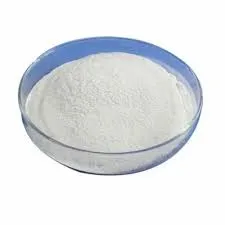
Nov . 08, 2024 22:38 Back to list
Potential Side Effects of Hydroxypropyl Methyl Cellulose Usage and Safety Considerations
Understanding the Side Effects of Hydroxypropyl Methyl Cellulose
Hydroxypropyl Methyl Cellulose (HPMC) is a cellulose ether that is widely used in various industries ranging from pharmaceuticals to food production. It serves multiple purposes including acting as a thickening agent, emulsifier, and film former. Given its extensive application, it is important to understand its safety profile and potential side effects. In this article, we will explore the side effects related to HPMC usage, particularly in the context of food and pharmaceutical applications.
What is Hydroxypropyl Methyl Cellulose?
HPMC is a semi-synthetic polymer derived from cellulose, which is a natural component of the cell walls of plants. It is soluble in water and can form gels, making it a valuable ingredient in products such as dietary supplements, laxatives, and personal care items. HPMC is favored in many formulations due to its ability to enhance texture and consistency while being non-toxic and biodegradable.
Common Uses of HPMC
In the pharmaceutical industry, HPMC is often used as a binding agent in tablets and capsules. It helps control the release of drugs, ensuring a gradual absorption in the body. In the food industry, HPMC is frequently utilized as a thickener in sauces, dressings, and desserts. It is also employed in gluten-free baking to improve the elasticity and texture of baked goods.
Reported Side Effects
While HPMC is generally regarded as safe, some individuals may experience side effects. Most side effects associated with HPMC are mild and transient. Here are some of the most commonly reported side effects
1. Gastrointestinal Issues Some individuals have reported experiencing gastrointestinal discomfort, such as bloating, gas, or diarrhea, particularly when consuming large amounts. This is especially pertinent in the context of dietary supplements or high-fiber products that contain HPMC.
2. Allergic Reactions Although rare, allergic reactions to HPMC can occur. Symptoms may include rash, itching, or swelling, particularly in individuals with a sensitivity to cellulose products.
hydroxypropyl methyl cellulose side effects

3. Dry Mouth In some cases, users have noted a feeling of dryness in the mouth after consuming products containing HPMC. This could be indicative of the thickening properties of HPMC, which may coat the mouth and throat.
4. Effects on Drug Absorption Since HPMC is used as a binding and controlling agent in pharmaceuticals, it may influence the rate and extent of drug absorption. This effect could potentially alter the efficacy of certain medications, particularly when taken in conjunction with high-fiber products.
5. Interactions with Medications There is a possibility of HPMC interacting with certain medications, affecting their absorption or effectiveness. Individuals taking medications that require precise absorption levels may want to consult a healthcare professional before using products containing HPMC.
Considerations and Precautions
For most healthy individuals, HPMC is considered safe when consumed in moderate amounts. However, those with pre-existing gastrointestinal conditions, such as irritable bowel syndrome or other digestive disorders, should exercise caution.
It is essential to read product labels and understand the concentration of HPMC within products, especially in dietary supplements. Moreover, when introducing new products into your diet or medication regimen, a gradual approach is advisable to gauge individual tolerance.
Conclusion
Hydroxypropyl Methyl Cellulose is a versatile ingredient used across multiple industries, known for its binding and thickening properties. While it is generally regarded as safe and effective, some individuals may experience mild side effects, particularly related to gastrointestinal function. Being aware of these potential side effects can help users make informed decisions regarding their consumption of products containing HPMC. As always, for personalized advice or concerns about side effects or interactions, consulting a healthcare professional is recommended.
By understanding the role of HPMC and its potential impacts on health, consumers can better navigate their choices in the myriad of products available today.
-
Unlocking the Benefits of HPMC Products: A Gateway to Versatile Applications
NewsAug.07,2025
-
Unleashing the Potential of HPMC Ashland: A Comprehensive Look
NewsAug.07,2025
-
Tile Bonding Cellulose: The Key to Superior Adhesion and Durability
NewsAug.07,2025
-
Hydroxypropyl Methylcellulose Powder: The Versatile Component in Modern Pharmaceuticals
NewsAug.07,2025
-
Hydroxyethyl Cellulose: The Versatile Solution for Various Industries
NewsAug.07,2025
-
Hydroxyethyl Cellulose (HEC): The Versatile Polymer for Various Applications
NewsAug.07,2025







